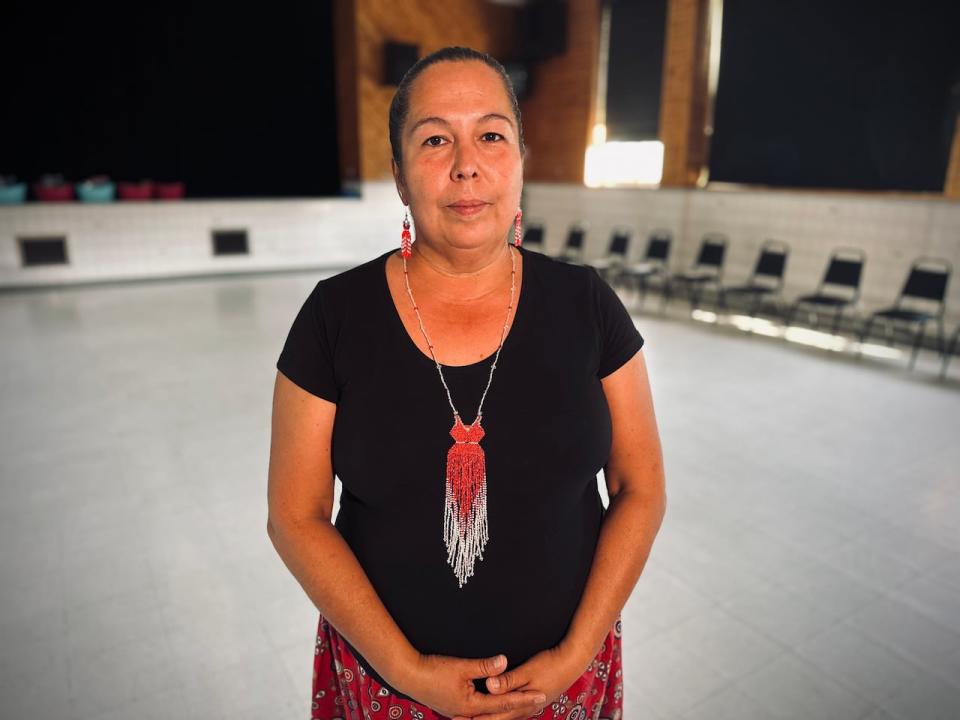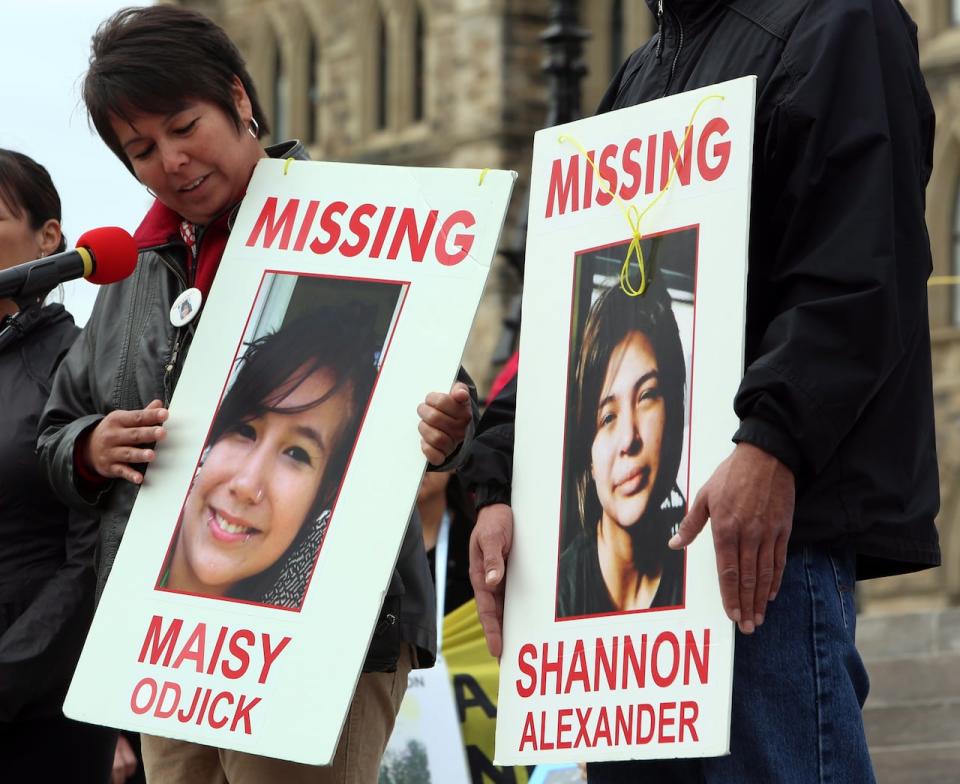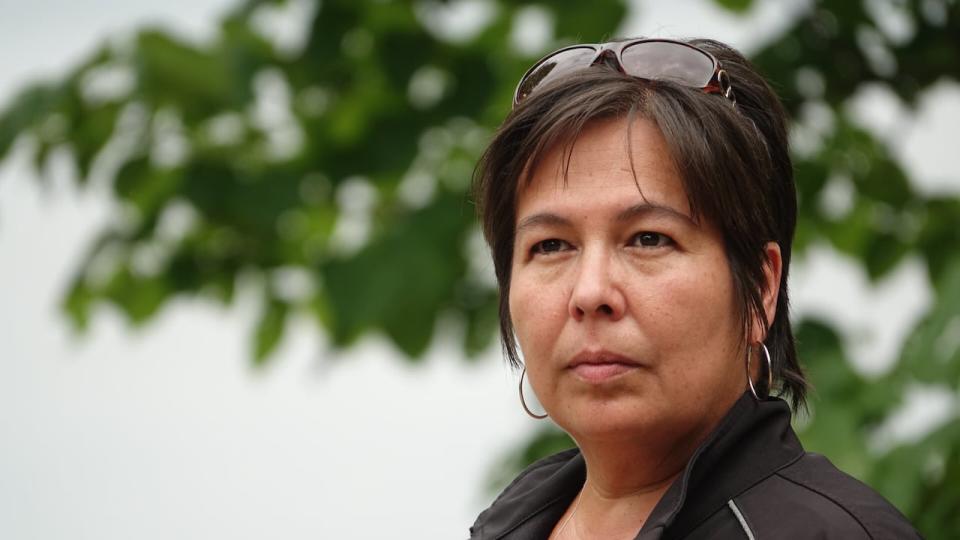Kitigan Zibi keeps 'hope alive' on 15th anniversary of girls' disappearance

Fifteen years ago to the day, Shannon Alexander and Maisy Odjick were seen for the last time in Maniwaki, Que.
Every year since, members of Kitigan Zibi Anishinābeg First Nation have gathered to commemorate the anniversary.
At this year's gathering on Wednesday, Odjick's mother Laurie said she still feels "an emptiness."
"You live with it every day, and you just learn to cope better," she said. "Hope is what keeps me going."
The two girls were last seen at Alexander's home in Maniwaki on the morning of Sept. 6, 2008, according to the Sûreté du Québec (SQ).
At the time of their disappearance, they were 16 and 17 years old, respectively. They had planned to attend a dance that evening before returning to spend the night at Alexander's home.
But the next morning, personal effects left at the residence were the only sign of the girls.
A few days later, their families reported them missing.

Laurie Odjick recalls how 15 years ago, police treated the two girls' disappearance as a missing persons case. 'When somebody is listed as a runaway, nobody looks,' she said. (Felix Desroches/Radio-Canada)
Search continues
Police at the time treated the girls as runaways and were criticized by the family and other Kitigan Zibi members for their inaction.
"When somebody is listed as a runaway, nobody looks," Laurie Odjick said. "There was no searching done, there was no amber alert. There was nothing."
Eventually, police opened an investigation.
Fifteen years later, the search isn't over. The Missing Children's Network, an organization that accompanies and supports the families of missing children, is still advocating for the families.
"There are many people who wonder why after 15 years we keep hope alive," said Mélanie Aubut, the network's executive director, in a French-language interview. "For us, it is our mission to be the voice of these people who have disappeared."
A billboard of the two missing girls still stands on Highway 105 near Kitigan Zibi, urging anyone with information to call the Missing Children's Network.
Aubut said she believes the process of uncovering clues and getting answers for the families should never stop.

Laurie Odjick holds a sign with photo of her missing daughter, Maisy, at a rally on Parliament Hill in Ottawa on Friday, Oct. 4, 2013. (Fred Chartrand/Canadian Press)
Several leads — but no breakthroughs
The investigation into the teenagers' disappearance is led by the SQ's disappearance and unsolved cases division, with support from the Ontario Provincial Police's director of criminal investigations.
Since they vanished, police have investigated several leads and reports, suggesting they may have ended up in Ottawa or Kingston, Ont.
In July 2017, SQ investigators were deployed to Kitigan Zibi to meet with witnesses and search Pitobig Creek after receiving a tip about where the girls' bodies might be found.
Police did not find the bodies, and maintained the investigation was not over.
"Just the fact that they took that time and did it, is what mattered," Laurie Odjick said.

Dive teams search Pitobig Creek on the Kitigan Zibi First Nation on July 18, 2017, after police received a tip regarding Odjick and Alexander's disappearance. The searchers came back emptyhanded. (Sûreté du Québec)
The most recent clue police deemed credible came in December 2020, when a photo posted on social media showed a homeless woman in Seattle whose physical description matched that of Alexander.
Police, however, verified the woman had been misidentified.
Unlike on the fifth and tenth anniversaries of the disappearance, the SQ did not attend this year's event. It did not give a reason for its decision and declined an interview request from Radio-Canada.
In an email, the SQ said all the information in connection with the file can be found on its unresolved case site, adding the investigation is still active.
'Everybody matters'
The disappearance of Shannon Alexander and Maisy Odjick has deeply affected Sen. Michèle Audette, the former commissioner of the National Inquiry into Missing and Murdered Indigenous Women and Girls (MMIWG).
When Audette learned about the event in 2009, several months after the girls' disappearance, she was shocked to hear the case had occurred so close to a major population centre like Ottawa.
Audette asked Laurie Odjick to accompany her during work on the MMIWG inquiry.
"MMIWG is still and can be more out there, because we're still behind the scenes I believe," Odjick said. "Everybody matters, and their daughters matter."

Laurie Odjick, seen here in 2017, says she's felt an 'emptiness' ever since her daughter disappeared. (Ashley Burke/CBC)


